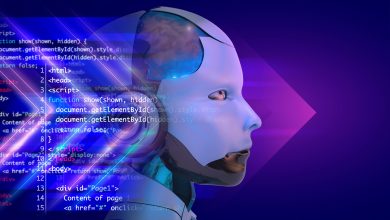
AI is poised to radically change the way we work—and that’s not hyperbole. In innovation and creative fields especially, it’s already accelerating processes that used to take months and cost hundreds of thousands of dollars. Analyzing massive datasets? Done in seconds. Generating quick consumer feedback through persona simulations? Easy. Boiling down messy inputs into a single, tidy idea? Click of a button.
But the speed and scale that today’s most prevalent AI platforms, Large Language Model systems (LLMs), bring also reveal its biggest limitation: it’s only as good as the patterns it can recognize. By design, this type of AI is great at the average. It surfaces what already exists. It predicts what’s most likely. The models do not form abstractions, understand causality, build models of time, intent, or environment. They are excellent at pattern-matching, yes, but because they are looking at what is most likely, they also propagate bias and sameness. At its core, LLMs are prediction engines often delivering something proficient—but rarely something provocative.
So while it might hand you neat consumer insights, or say that wellness products are trending, it won’t dig for the deeper why behind that – and importantly, it won’t point you toward reasons that live outside of the current logical frame of reference. Yes, sales may be up because of a new influencer strategy or product release. AI can trace those paths. But it won’t catch the deeper, more human reasons: that people bought into wellness because the world feels unwell, and they’re desperate to feel some sense of control.
This is the difference between knowing what people do and understanding what they feel. And here’s where AI falls short because the deepest insights often live in contradictions and discomfort, in things people don’t say or can’t articulate clearly. A data set might show fewer doctor visits, and when you ask AI it might tell you it’s because of cost or inconvenience. But only talking to people, with empathy and patience, will reveal that some aren’t going because they’re terrified of the diagnosis, or because their doctor doesn’t truly understand them.
AI can’t read between the lines of a conversation. It can’t catch when someone says “I’m fine” while visibly fidgeting. It won’t notice the say/do gap when someone tells you they’re saving enough for retirement while shaking their head no. These subtle cues, these human contradictions, are the birthplace of real insight. And they require human connection, not just machine learning.
After a decade of helping clients streamline research—faster, cheaper, bigger—I’m now seeing a surprising reversal. In the last six months, more and more clients are coming back asking for ethnographic work. They want to sit in people’s homes. They want to understand what’s happening in their hearts. Not just at the surface level, but underneath it.
And that says something. AI has become a rocket booster for insight collection. But it hasn’t yet cracked insight creation. It can summarize what’s already known, but it can’t tell you what’s hiding in the silence. That’s the domain of humans, of researchers, strategists, creators, and innovators who know how to ask uncomfortable questions, spot the quiet contradictions, and make the connections no algorithm ever could.
Let AI handle speed. Let humans handle nuances
The future isn’t AI versus human insight—it’s AI with human insight. A tool is only as powerful as the hand that wields it. AI can get you there faster, at the current moment, only people can extract the powerful insights and leaps in connection.
It can tell you where to look, but not what to look for. It can point you toward patterns, but it takes a human to spot the tension. The disconnect. The moment of truth buried under ten layers of polite answers.
This is the balance we should be aiming for: using the speed and scale of AI to expand our reach, while doubling down on human ingenuity, emotional intelligence, and lived experience to add meaning. AI can help you move faster, but only people can help you move deeper and with more connection.
Empathy and Emotion as a Competitive Edge
As everyone jumps on the AI bandwagon, speed and efficiency are quickly becoming table stakes. Everyone’s using the same tools. Everyone has access to the same datasets. So what’s going to differentiate your brand? It won’t be scale. It won’t be automation.
Your edge will be human.
It will be how well you understand your audience beyond the algorithm. How deeply you connect, how precisely you empathize, how authentically you show up in the moments that matter. Resonance. Relevance. Trust. Connection. That’s what builds loyalty—and it’s born from insight that’s felt, not scraped.
So yes, AI will keep changing the game. But if you want more than surface level responses, that’s all human.



